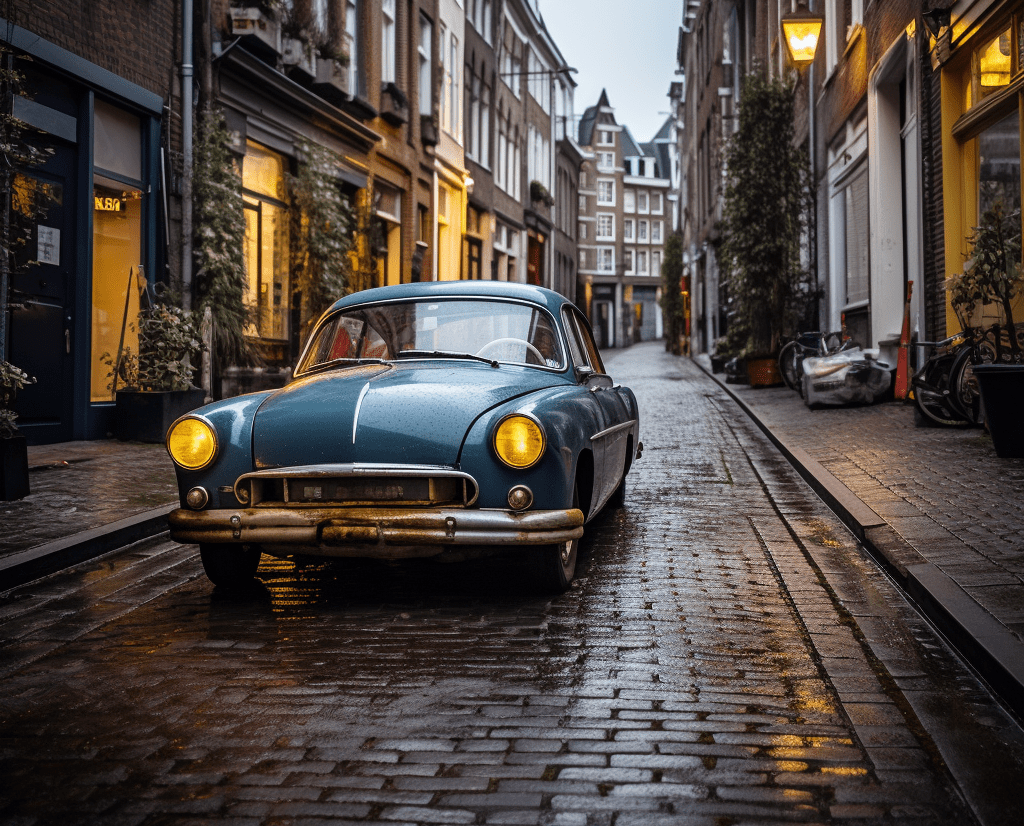Driving in Amsterdam
Driving in Amsterdam – The Benefit of a Car
It sounds like the perfect trip: renting a car (or bringing your own) to visit the highlights in Amsterdam. You can explore destinations in the more rural areas, drive towards Keukenhof, or visit some lovely villages. In the evening, you can drive to a restaurant, do some shopping, and have your privacy as you move around. Amsterdam is indeed a city where driving can be convenient, as it has surprisingly little car traffic and you can generally travel quickly from one side to another. However, most Dutch people choose not to own a car, and in fact, many people living in Amsterdam don’t own a car at all. This is driven by two main factors: on one hand, Dutch people prefer not to own a car, and on the other hand, the municipality is working to reduce car usage in Amsterdam. So, what is happening here?
Amsterdammers are driving less
Compact City Layout: Amsterdam is a compact city with well-planned urban development. This means that many essential services, workplaces, shops, and recreational areas are within walking or biking distance, reducing the need for a car.
Bicycling Culture: Amsterdam is known for its strong biking culture, with dedicated bike lanes and a bike-friendly urban environment. Many residents prefer using bicycles for their daily commute and errands, as it’s a more eco-friendly and healthy mode of transportation. The flip side of the coin is that many drivers find it stressful to deal with cyclists coming from all sides.
Excellent Public Transportation: Amsterdam has an extensive and efficient public transportation system, including trams, buses, trains, and ferries. The availability of reliable public transportation makes it convenient for residents to get around the city without the need for a personal vehicle, given that many people live and work in the city. Traveling from one side to another by public transportation shouldn’t take you more than 40 minutes.
Limited Parking Space: Parking can be expensive and challenging to find in Amsterdam. Many residential areas have limited or expensive parking options, and there are strict regulations regarding parking permits and zones. Most residents don’t have a garage. In fact, many garages have been converted into living areas. It’s safe to say that within the A10 ring, you won’t find free parking spots, and most require payment from Monday through Sunday, with rates ranging from 6.50 to 8.00 euros per hour.
Environmental Awareness: Amsterdam places a strong emphasis on sustainability and environmental consciousness. Many residents choose to forgo car ownership to reduce their carbon footprint and contribute to the city’s efforts to promote cleaner air and reduce congestion. Within the A10 city ring, there is a strict policy regarding emissions, only allowing cars that meet Euro 5 emission standards by 2025.
Cost Considerations: Owning a car can be costly when considering expenses such as insurance, maintenance, fuel, parking fees, and taxes. With viable alternatives like public transportation, car sharing, and biking, some residents find it more economical to avoid car ownership. A car is truly considered a poor investment and cars have a quick write-off due to high labor costs.
Urban Planning and Infrastructure: Amsterdam’s urban planning prioritizes pedestrian-friendly streets, green spaces, and mixed-use development. This design encourages walking and cycling, making cars less necessary for day-to-day activities. However, the narrow one-way streets can cause frustration, especially when vans are unloading or when a moving truck is blocking the road. In such cases, there may be no alternative but to wait until you can continue.
Perception: Younger generations and many urban dwellers have shown a shift in priorities when it comes to transportation. The Dutch do not attribute any status to owning a car; instead, they prefer to share pictures from their festival visits and vacation destinations. Washing a car is considered a waste of time and is only done when absolutely necessary.
What if you want to drive a car in Amsterdam
Those who do own a car have to cope with changing regulations and increased costs. The government is trying to discourage car ownership by reducing the number of parking spots, slowing the assignment of parking permits, increasing parking rates, raising taxes, and imposing strict emission standards. Investments in alternatives such as public transportation, car-sharing initiatives, and bicycle-friendly infrastructure might help compensate for these changes.






